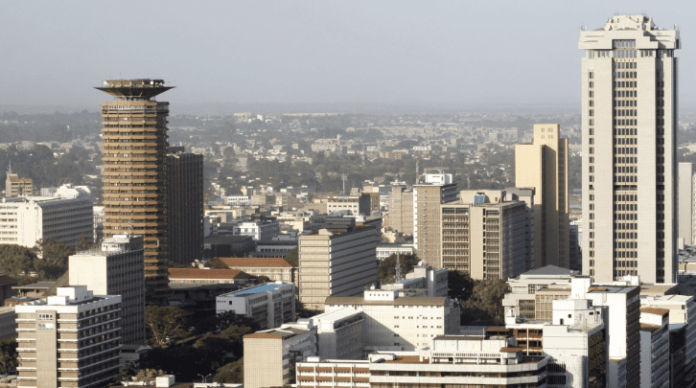Kenya Economic Growth: In January 2020, economic analysts projected that the Kenyan economy would flourish. Kenya’s economic growth projection for 2020 was upgraded by up to 10 basis points. The economists cited increased expenditure on infrastructure and a healthy private sector demand following the removal of interest caps on bank loans as some of the fundamentals that would drive growth in 2020.
As at December 2019, a consensus growth outlook based on an analysis of growth forecast from some 14 global banks, consultancies and think-tanks, showed that Kenya’s economy could expand by 5.8 percent in 2020.
As these projections came out, the world had began to confront a viral disease outbreak whose magnitude no one would have projected. On December 31 2019, China alerted the World Health Organization (WHO) that it had recorded several strange cases of pneumonia in Wuhan, the capital of central China’s Hubei Province. The majority of these cases were of people who worked at Wuhan’s Huanan Seafood Market. By January 5 2020, cases of the strange viral disease had hit 40 in China.
How Covid-19 battered Kenyan economy, fueled job losses
Suspicions arose that the disease may have been a recurrent of the Severe Acute Respiratory Syndrome (SARS) virus which had originated in China in 2002. By January 7, the strange illness was identified as belonging to the family of coronaviruses and named 2019-nCov. By February 11, with China reporting 908 deaths and 40,171 infections, the WHO named the virus as the severe acute respiratory syndrome coronavirus (SARS-Cov-2), and the coronavirus as the coronavirus disease 2019 (Covid-19). Three months later, over 270,000 people had succumbed to the virus in the world, with 3,850,000 people infected and 1,280,000 patients recovered. Locally, over 600 people were confirmed positive for the virus within three months.
Nearly one year after Kenya confirmed her first case of coronavirus, over 1,214,742 people have been tested, over 101,819 people have been confirmed positive, over 1,779 people have died, while over 84,361 have recovered. Over this period, Kenya has experienced the worst economic and social disruptions in decades.
The pandemic has eroded progress in poverty reduction in Kenya, forcing an estimated two million more Kenyans into poverty. Growth estimates have been reversed from nearly 6 per cent to around 1 per cent.
“Real gross domestic product (GDP) growth is projected to decelerate from an annual average of 5.7 per cent (2015-2019) to 1.5 per cent in 2020. However, if takes longer than expected to bring the COVID-19 pandemic under control, GDP could contract by 1.0 per cent in 2020.” a report by the World Bank on Kenya’s economic status said. According to the World Bank, in 2019, Kenya’s economic growth averaged 5.7 per cent , placing Kenya as one of the fastest growing economies in Sub-Saharan Africa. The report further cautioned that in 2021, recovery could be delayed if efforts towards curbing the spread and impact of COVID-19 are not accelerated. “If the pandemic is not brought under control sooner, Kenya could experience a delay in the projected recovery to 5.2 per cent growth in 2021,” the report said.
How Covid-19 pandemic is changing the future of work in Kenya
One of the most prominent signals of the extent to which the COVID-19 pandemic had hit the Kenyan economy is in the amount of loans that local banks have restructured. By October 2020, the amount of restructured loans stood at Sh. 1.38 trillion or 46.5 per cent of the total loan book. Personal and household loans topped the list of restructured loans, with Sh. 303.1 billion reviewed since March 2020. By December 31, 2020, Kenyan banks had restructured loans worth Sh. 1.63 trillion or 54.2 percent of the total Sh. 3 trillion loan book. Out of these, Sh. 1.29 trillion of business loans were restructured. In the same vein, according to the Central Bank of Kenya, banks have now extended the repayment period of personal and household loans worth Sh. 333 billion. This is an equivalent of 39.6 percent of total loan book in the sector.
The slump in economy meant that the Kenya Revenue Authority would miss revenue collection targets by large margins, further limiting the government’s spending power. Data from the National Treasury shows that by November, KRA posted a Sh. 62.95 billion shortfall on its payroll and consumption tax collection targets for three months to September 2020. This was attributed to job losses and COVID-19 economic disruptions. “The decline is attributed to the difficult operating environment due to the Covid-19 pandemic which has been adversely affecting revenue performance from March 2020,” the National Treasury said.








